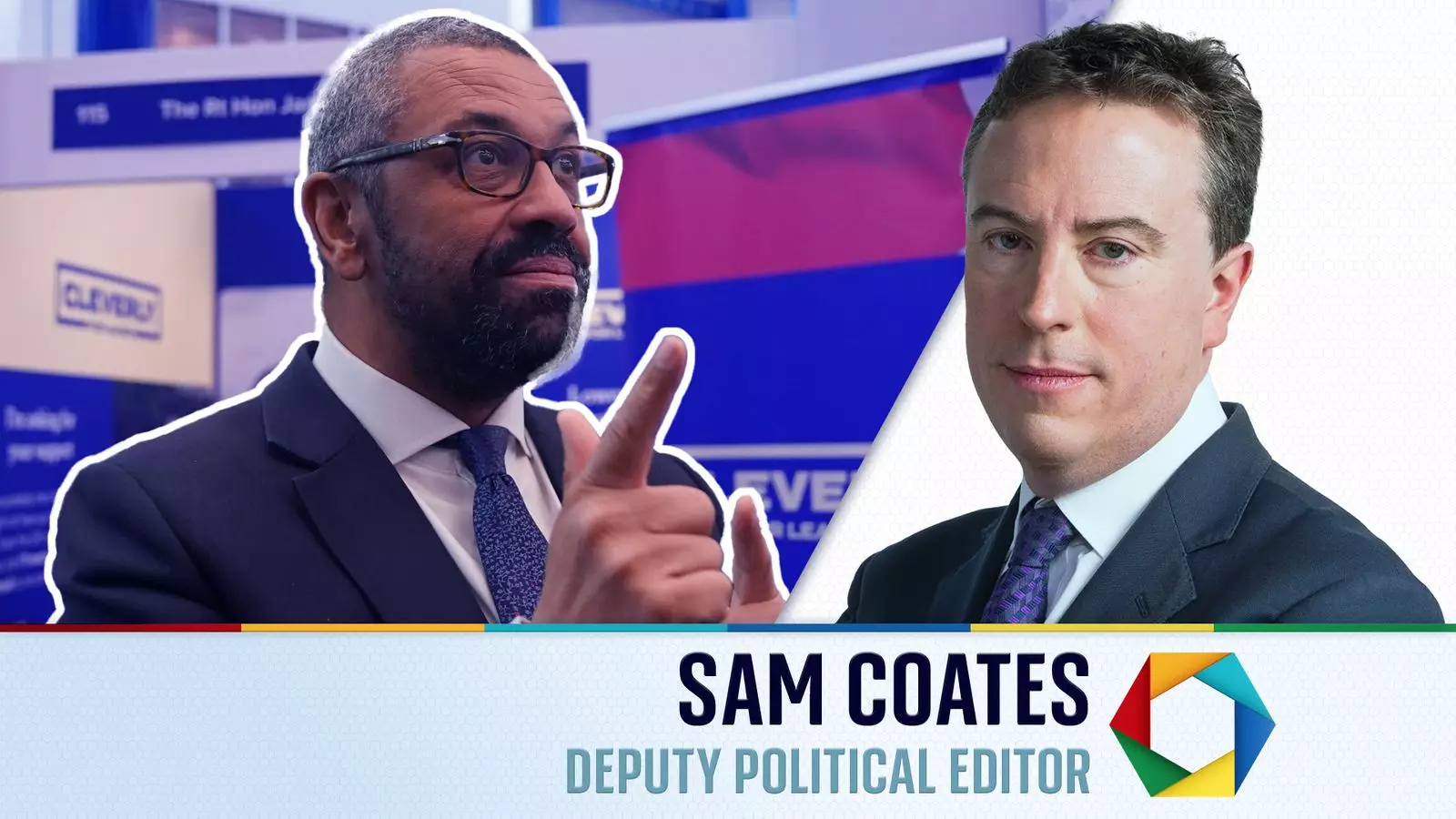The race for leadership within the Conservative Party is intensifying as candidates navigate the complex terrain of party politics. Recent developments, particularly during the party conference, have highlighted the fragile nature of momentum and the various strategies employed by contenders to secure their positions in a field that remains fluid and competitive.
The Rise of James Cleverly
James Cleverly has emerged as a formidable candidate, motivated by a strong conference speech that resonated positively with party members. His communication style, marked by warmth and optimism, has helped him connect with the party’s base, granting him a significant lead over his rivals as candidacy heats up. However, it’s crucial to recognize that such initial success does not guarantee a clear path to victory; the atmosphere is unpredictable and the competition is fierce. Cleverly’s impressive performance has not only elevated his standings but also placed him in a strategic position where he could potentially influence the final selection of opponents.
In contrast to Cleverly’s broad appeal, Kemi Badenoch is strategically positioning herself to capture the more conservative faction of the party. Her recent statements reflect a targeted approach directed towards right-leaning constituents, notably in her appeal to party loyalists who might traditionally align with factions sympathetic to Robert Jenrick. This move, while daring, is not without risk. Badenoch is stepping onto a path that could potentially isolate her from the one-nation Conservatives and may limit her appeal. The ongoing challenges reflect a deeply divided party, and while her vision is clear, whether it translates into electoral support remains an open question.
The Declining Trajectory of Robert Jenrick
Meanwhile, Robert Jenrick appears to be facing headwinds, marked by a notable decrease in support among parliamentarians. Reports indicate that while some supporters initially projected his success, he now finds himself losing ground. The recent conference may have impeded his momentum, indicating that despite a potentially solid base, the reception of his message was lukewarm. The drop from 33 to 31 votes in the latest round is alarming for his campaign, suggesting that his strategic approach may require reassessment. For leaders in this crowded field, the ability to adapt swiftly based on feedback and results is vital, and Jenrick’s trajectory raises the question of his viability as a candidate moving forward.
The dynamics of this leadership race are further complicated by the underlying sentiments among Tory members. Polling data illuminates crucial insights into what these members prioritize in a leader. Their emphasis on qualities such as integrity, honesty, and adherence to conservative values reveals a yearning for authenticity over showmanship. Only a minimal fraction expressed an overt desire for simply winning elections. This sentiment creates a compelling narrative: candidates like Cleverly, who may capture the symbolic leadership of the party but lack the purely electoral appeal, might struggle to convert popularity into votes when the final decision is made. Ultimately, understanding what motivates the base can play a decisive role in shaping the potential outcomes of the leadership contest.
As the political landscape continues to shift, it remains uncertain what the final leadership configuration will be. Each candidate is navigating complex possibilities that could shift quickly depending on public sentiment, party loyalty, and the perceptions of key constituencies within the party. The next stages of this contest promise additional twists as candidates jockey for position and favor amongst party members. With Cleverly, Badenoch, and Jenrick all vying for attention and allegiance, tensions will undoubtedly rise, and the ability to pivot effectively will likely determine who ultimately secures the leadership. In this high-stakes environment, every decision made in the upcoming days could have lasting implications for the future of the Conservative Party.
Overall, the current state of the Conservative leadership race underscores the need for candidates to be agile, responsive, and attuned to the evolving expectations of their party members. As the contest progresses, the road ahead is lined with both challenges and opportunities, laying the groundwork for a transformative moment in British politics.


Leave a Reply